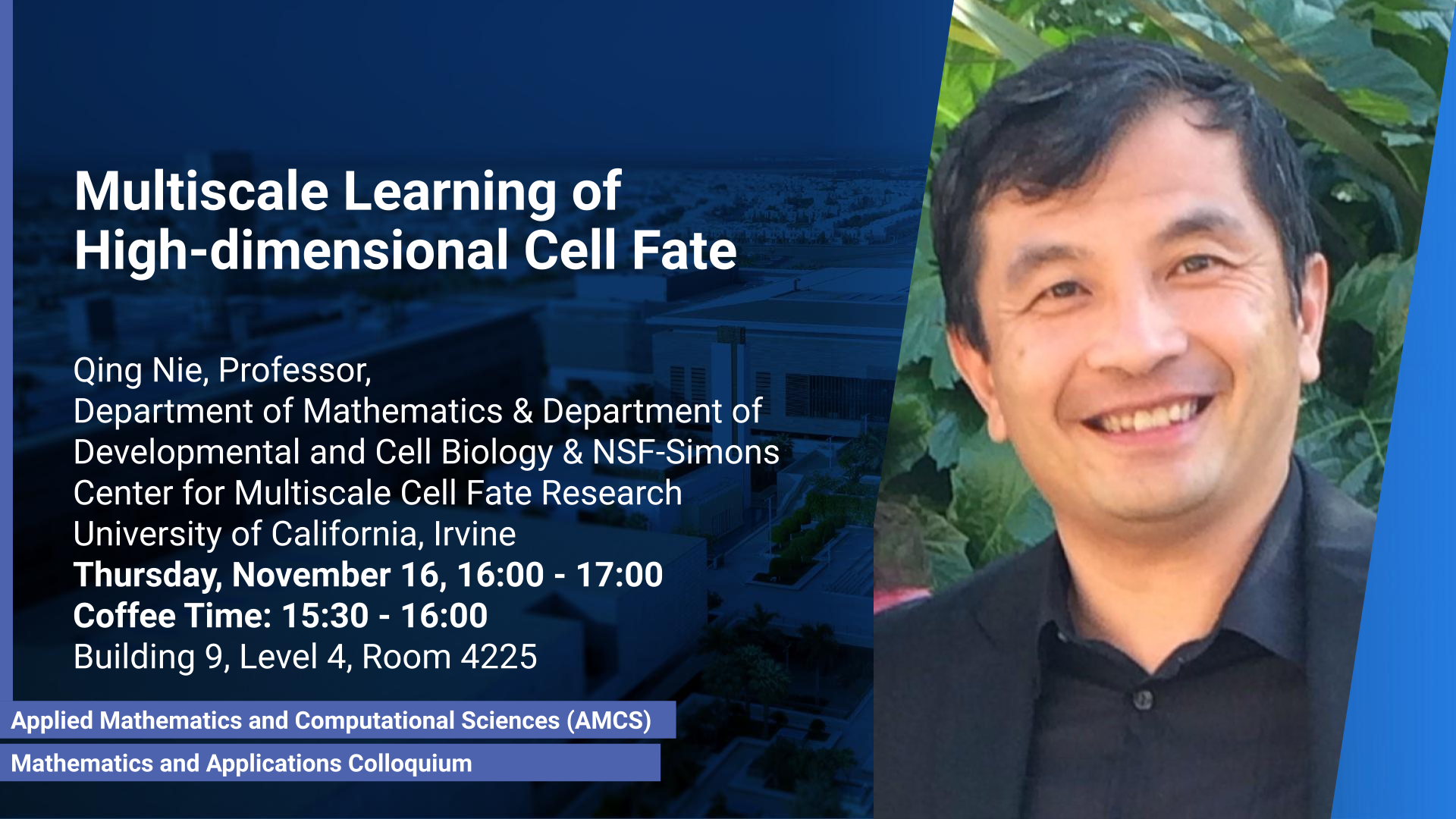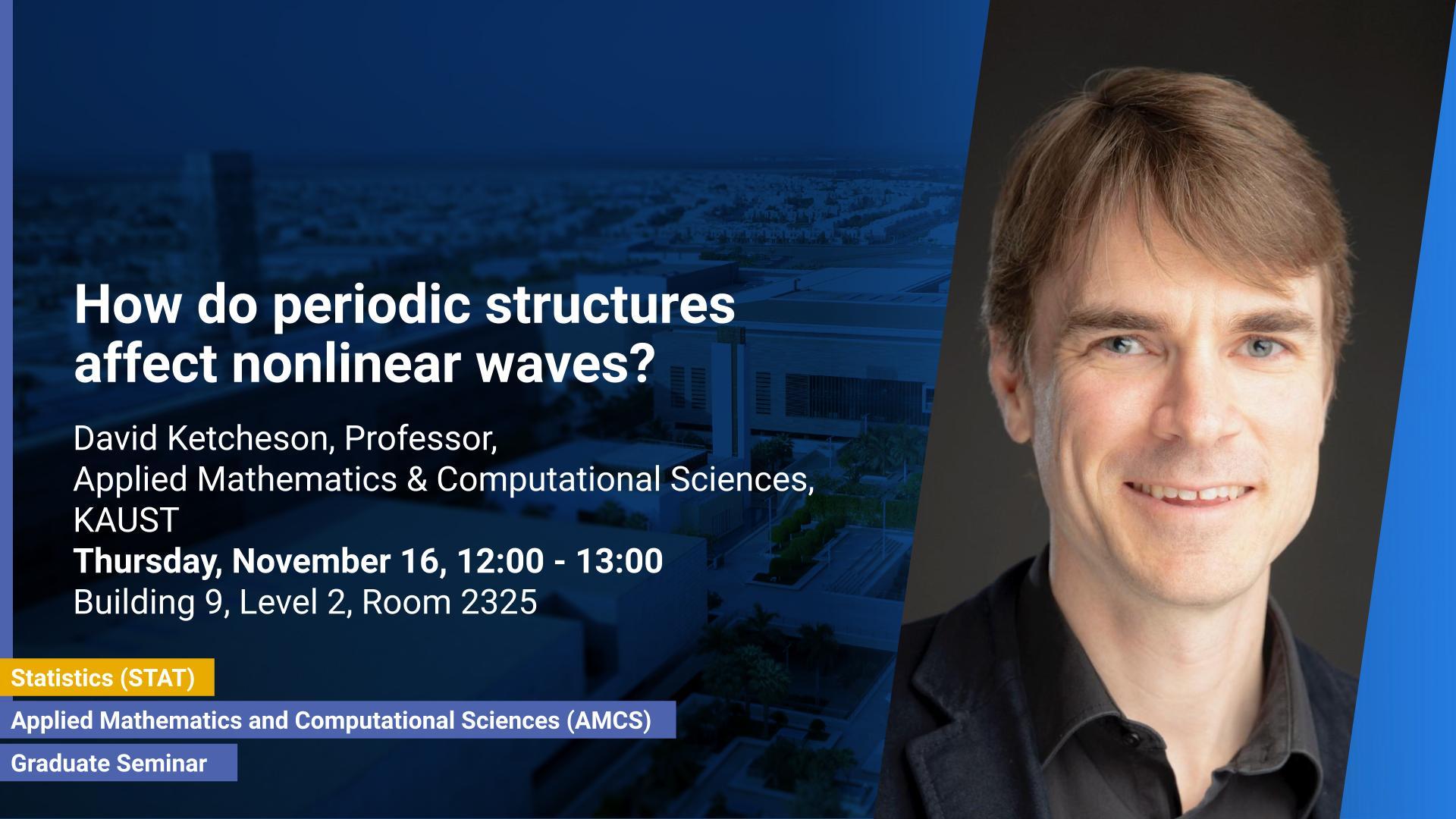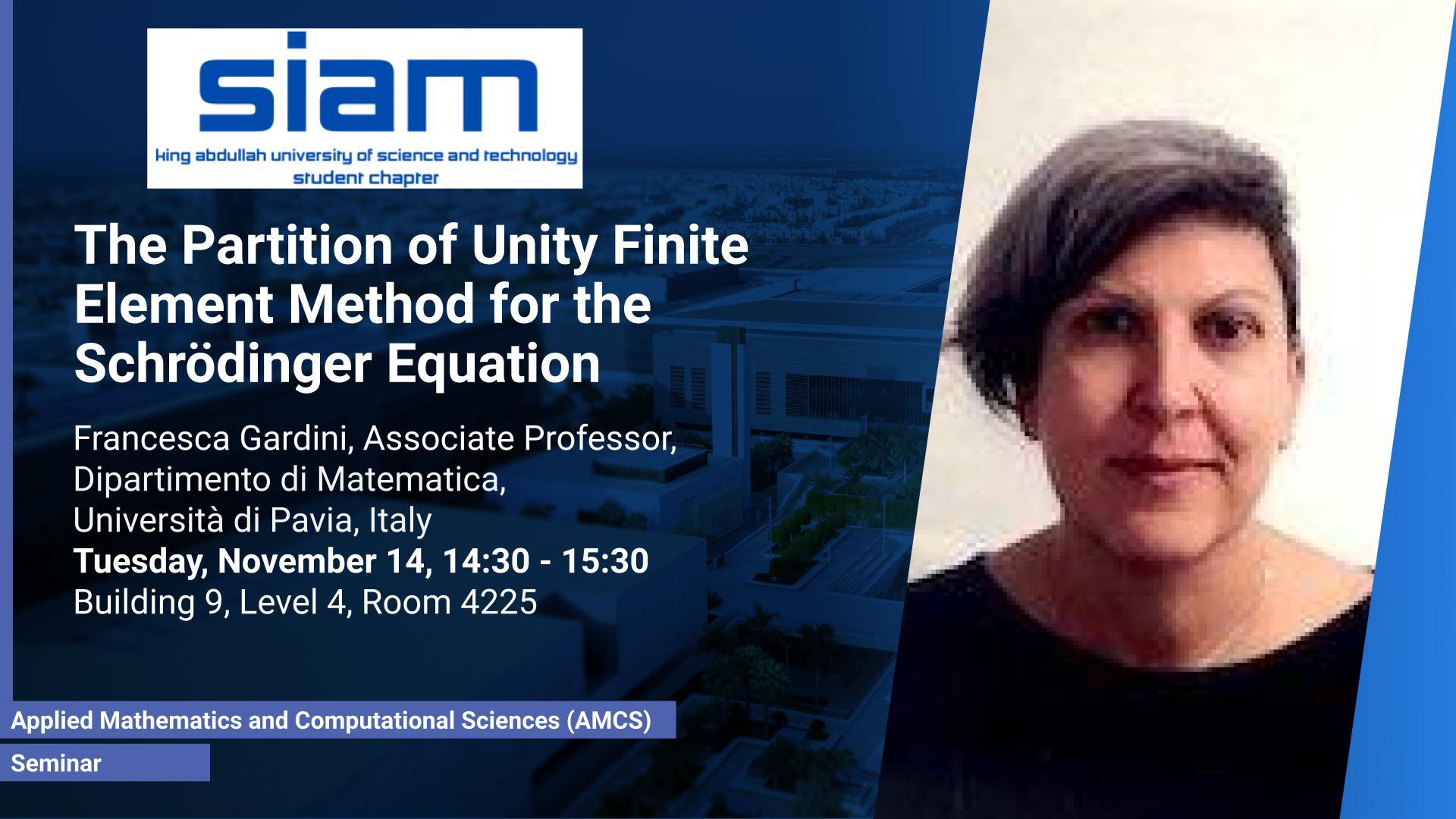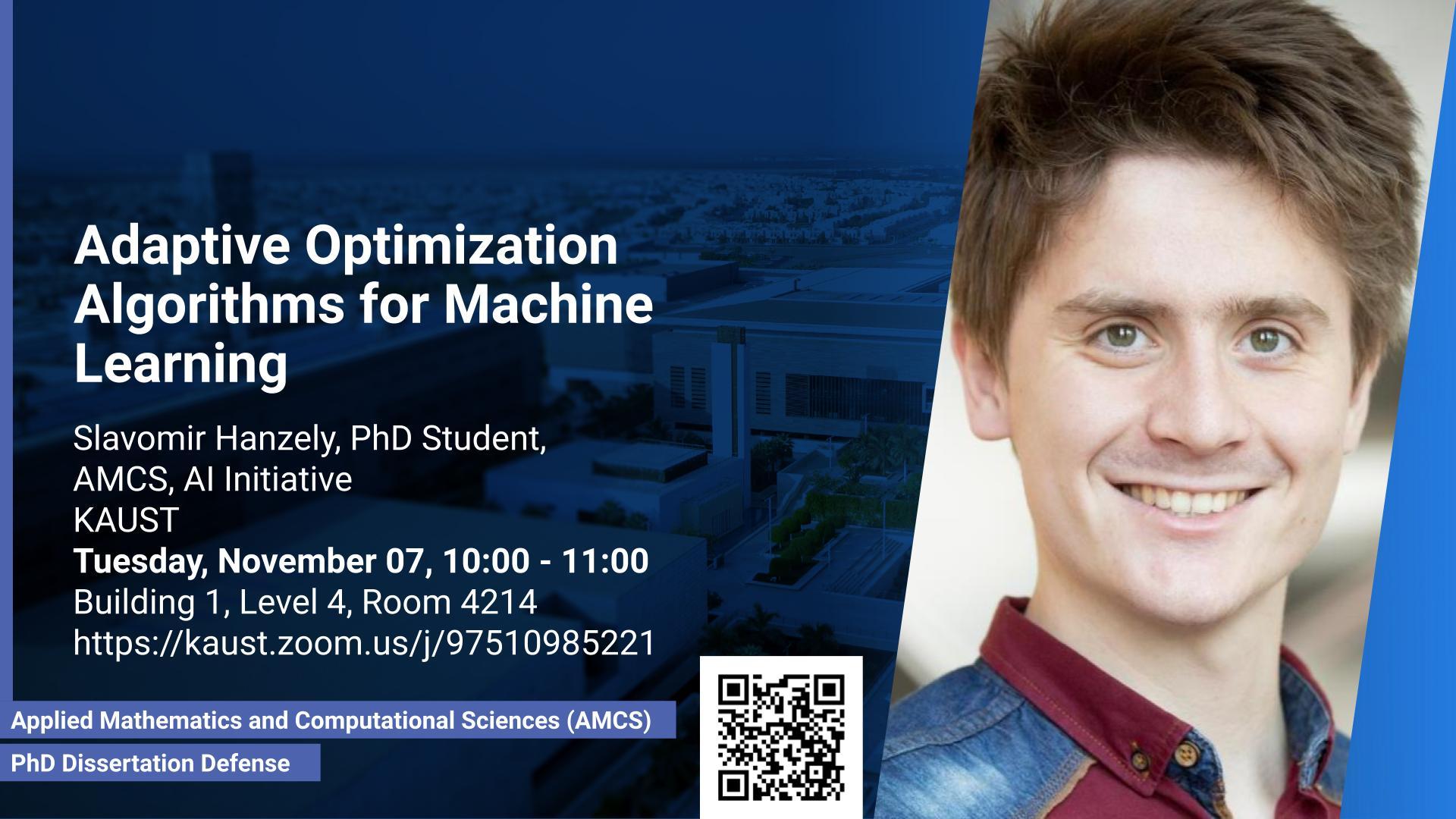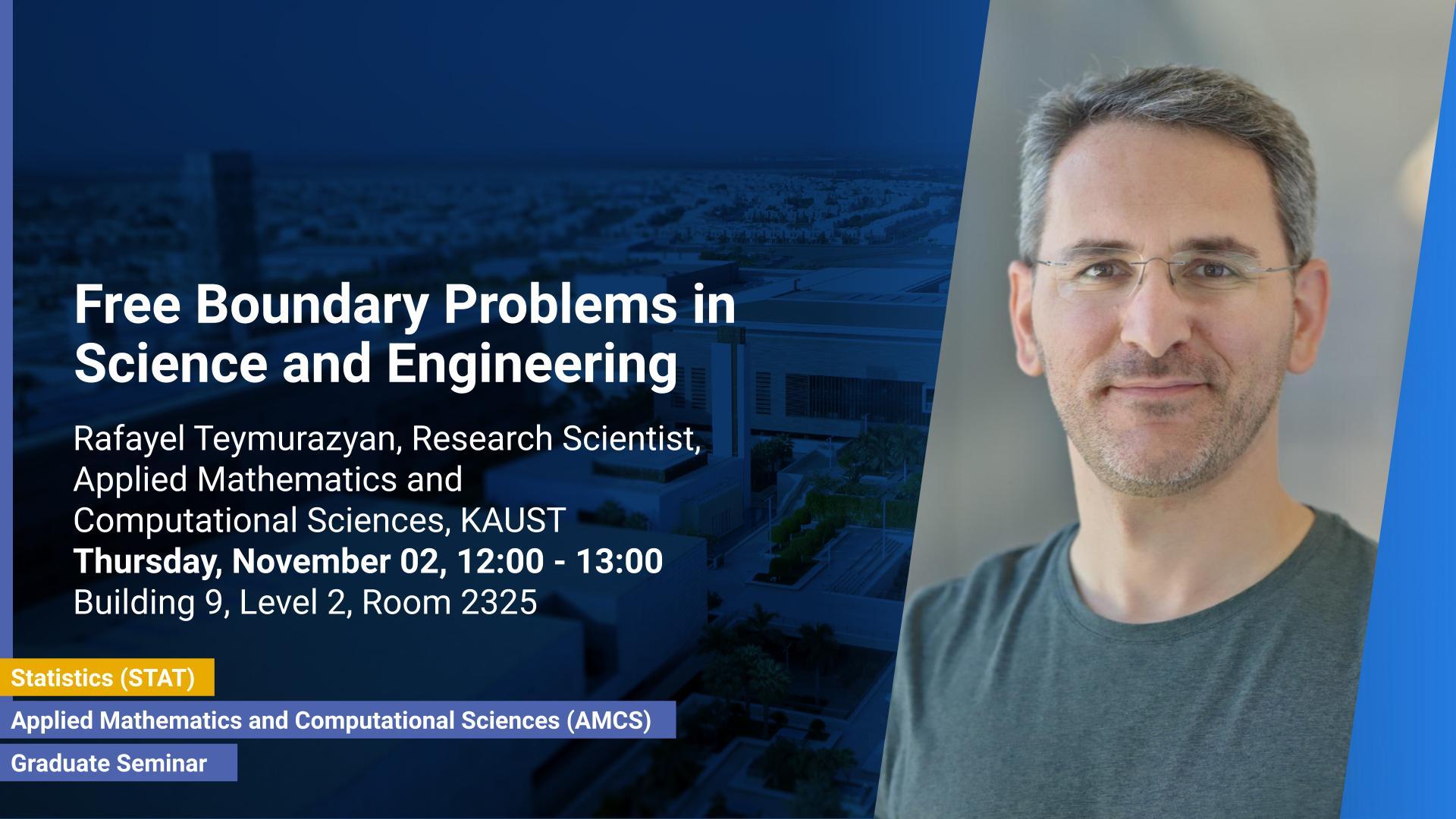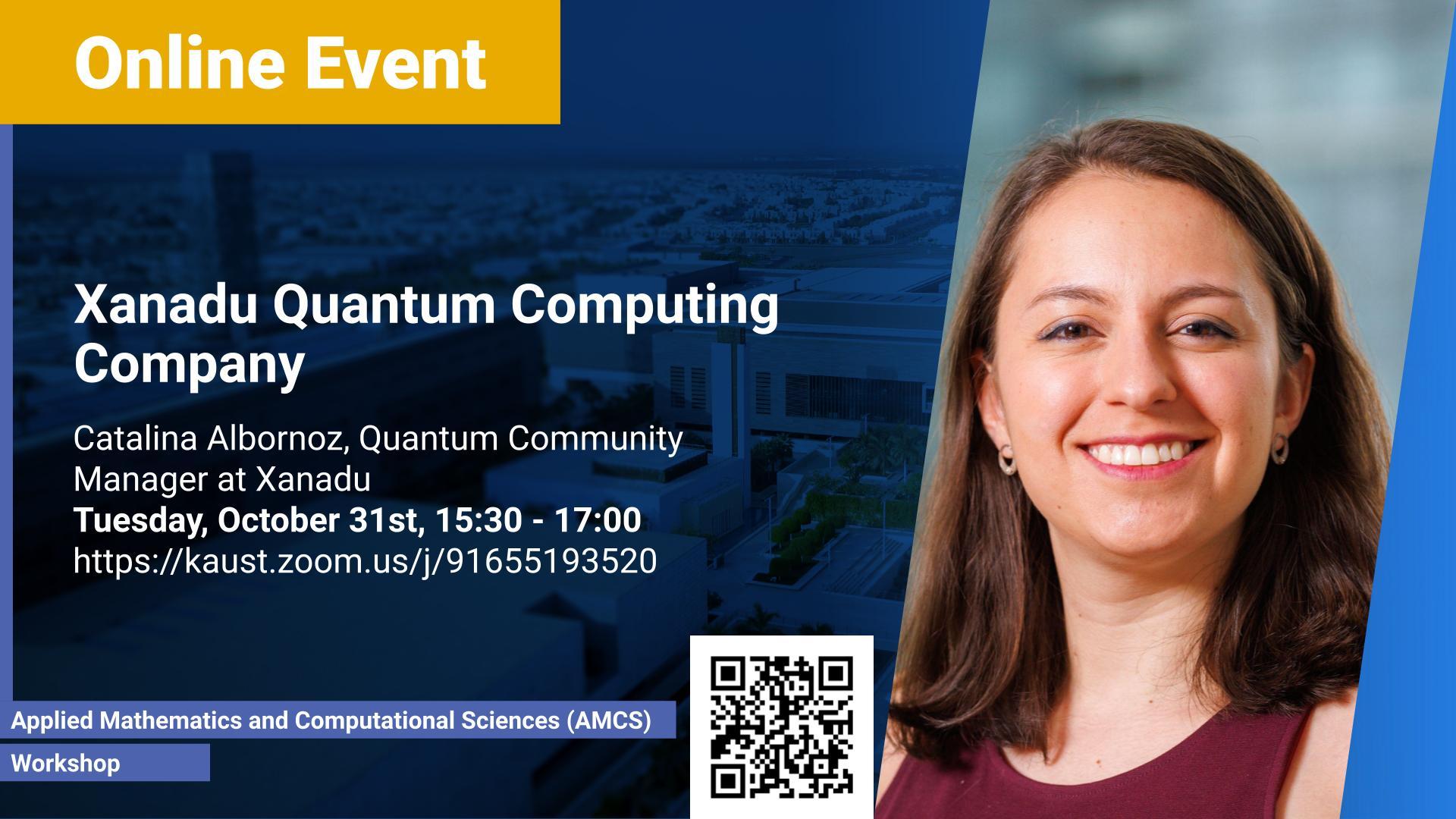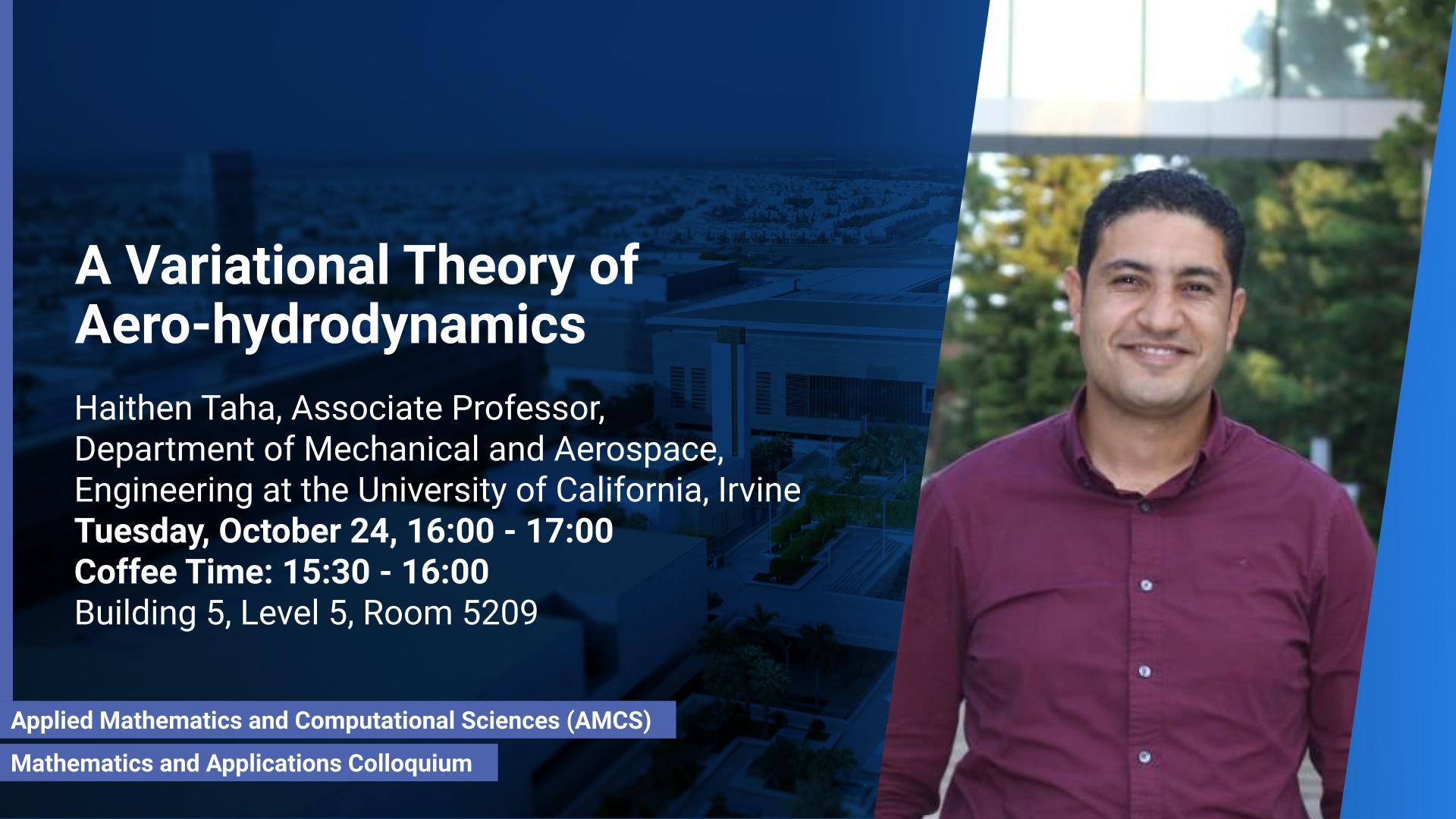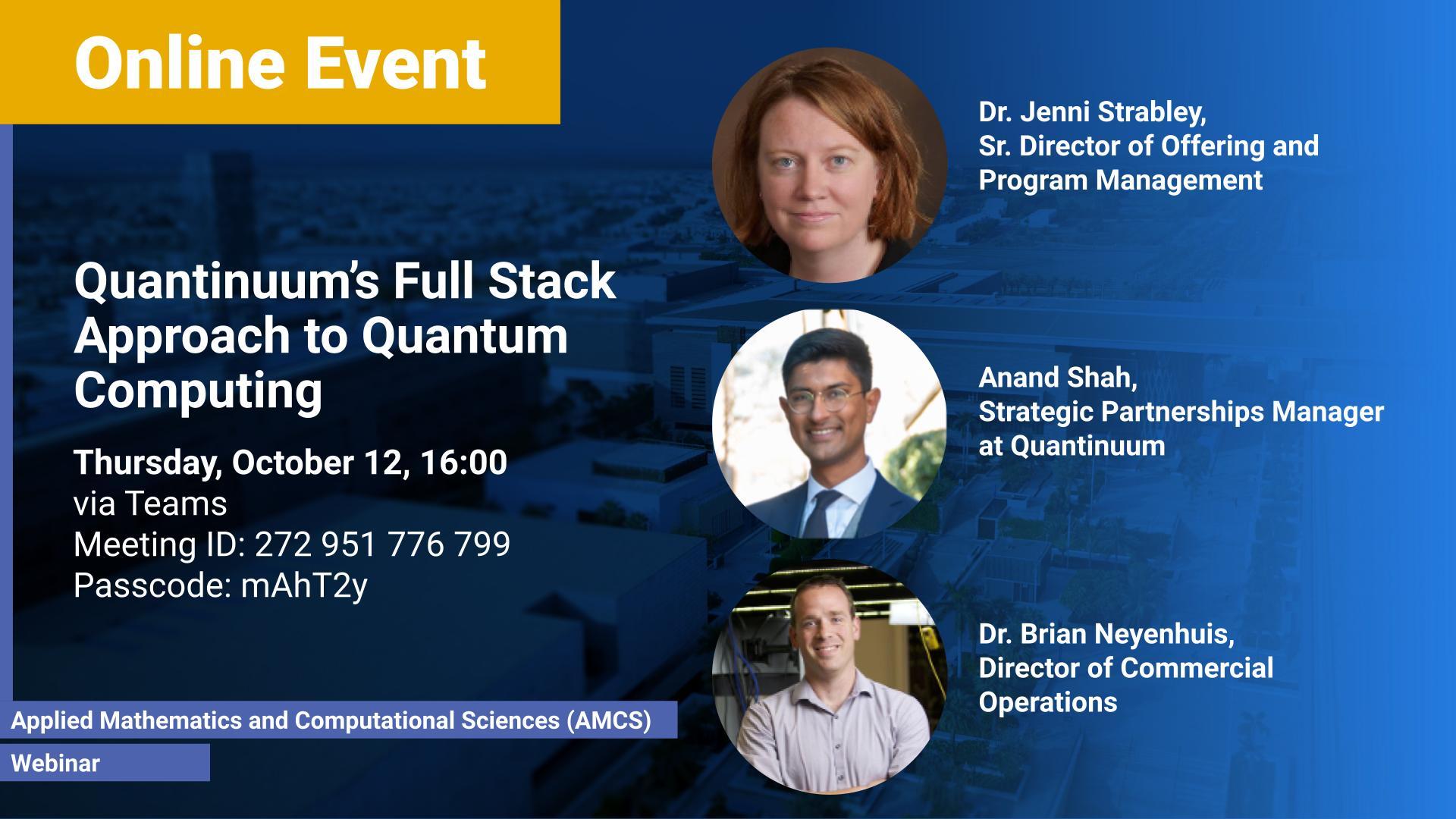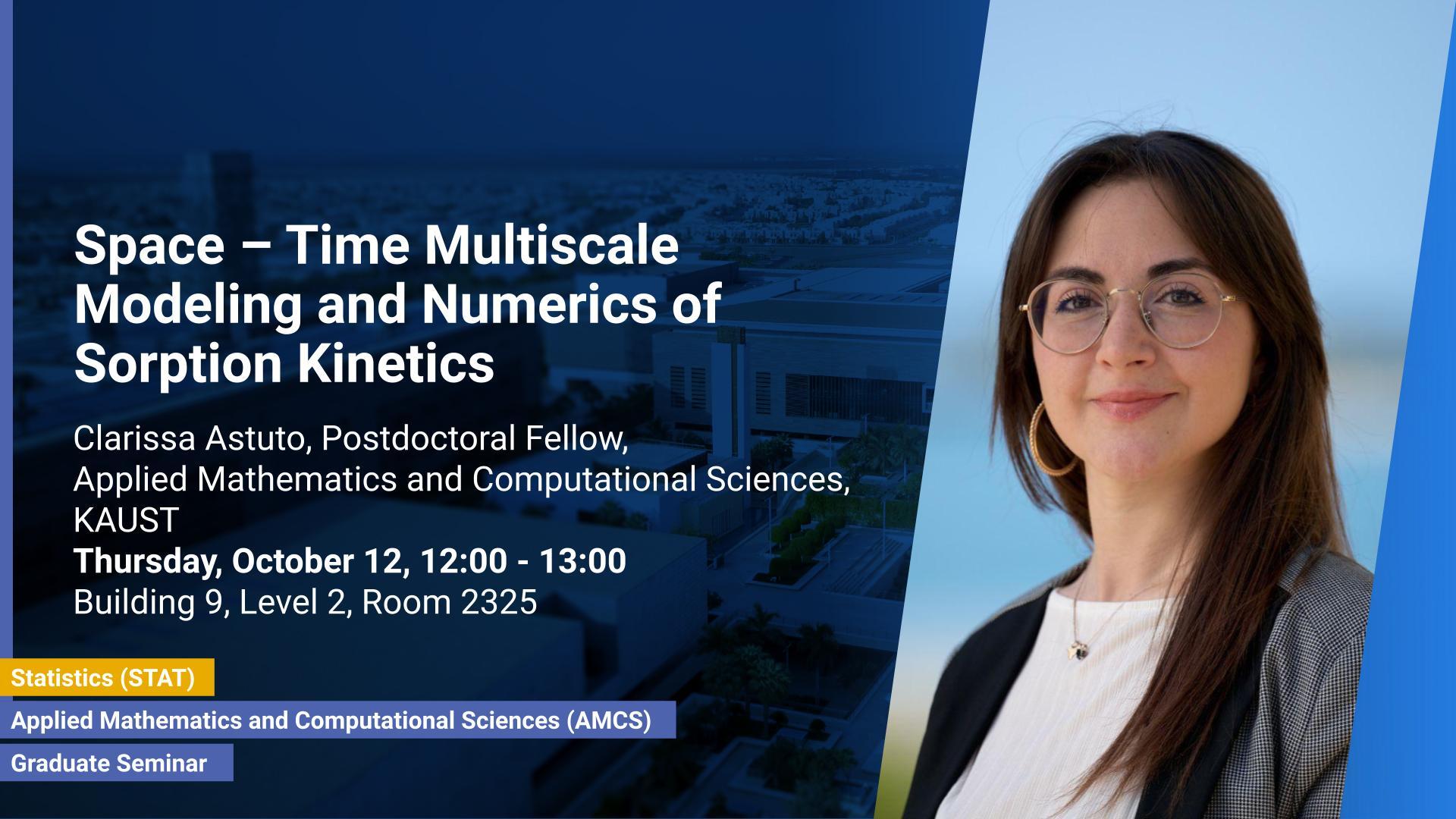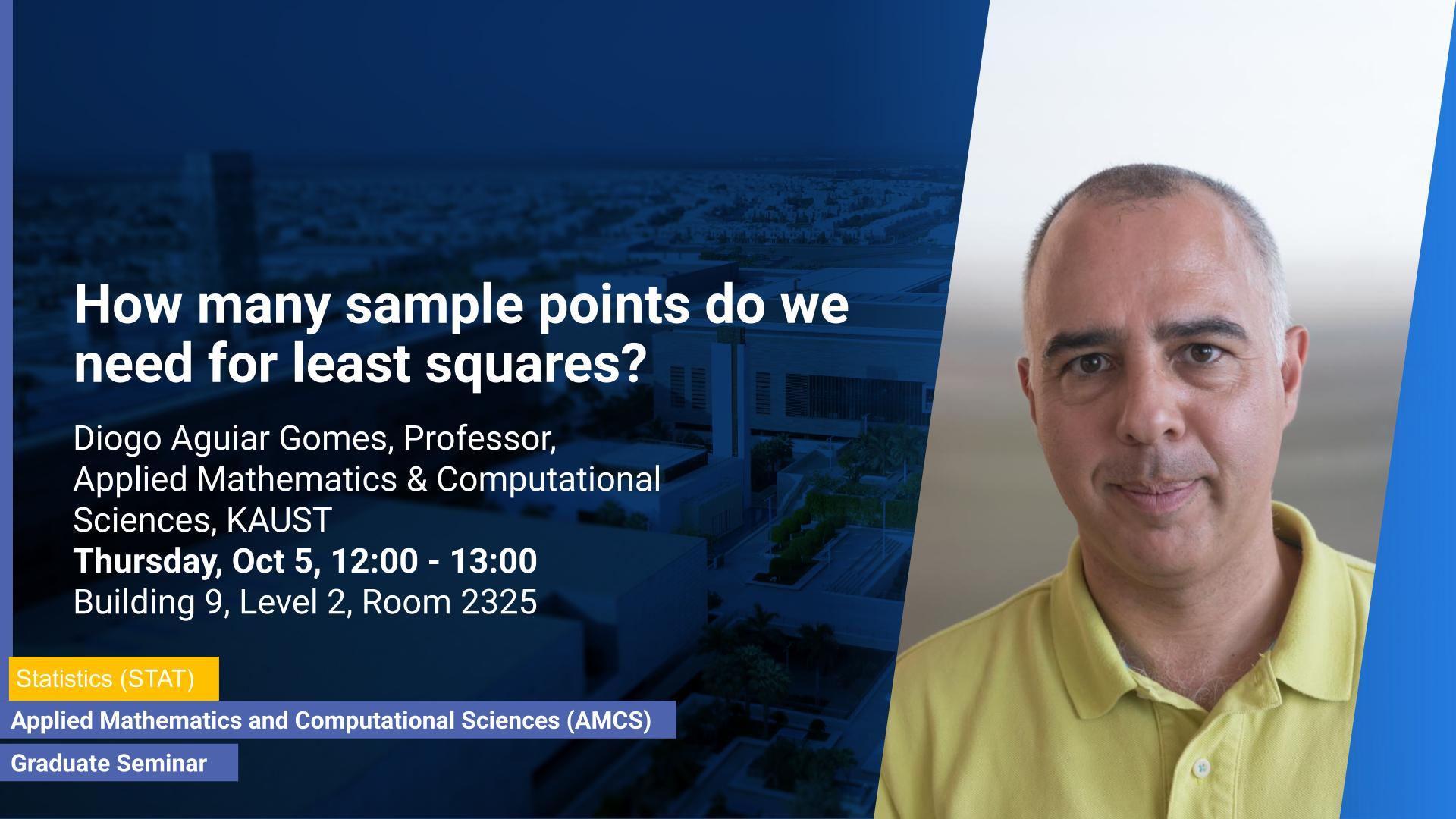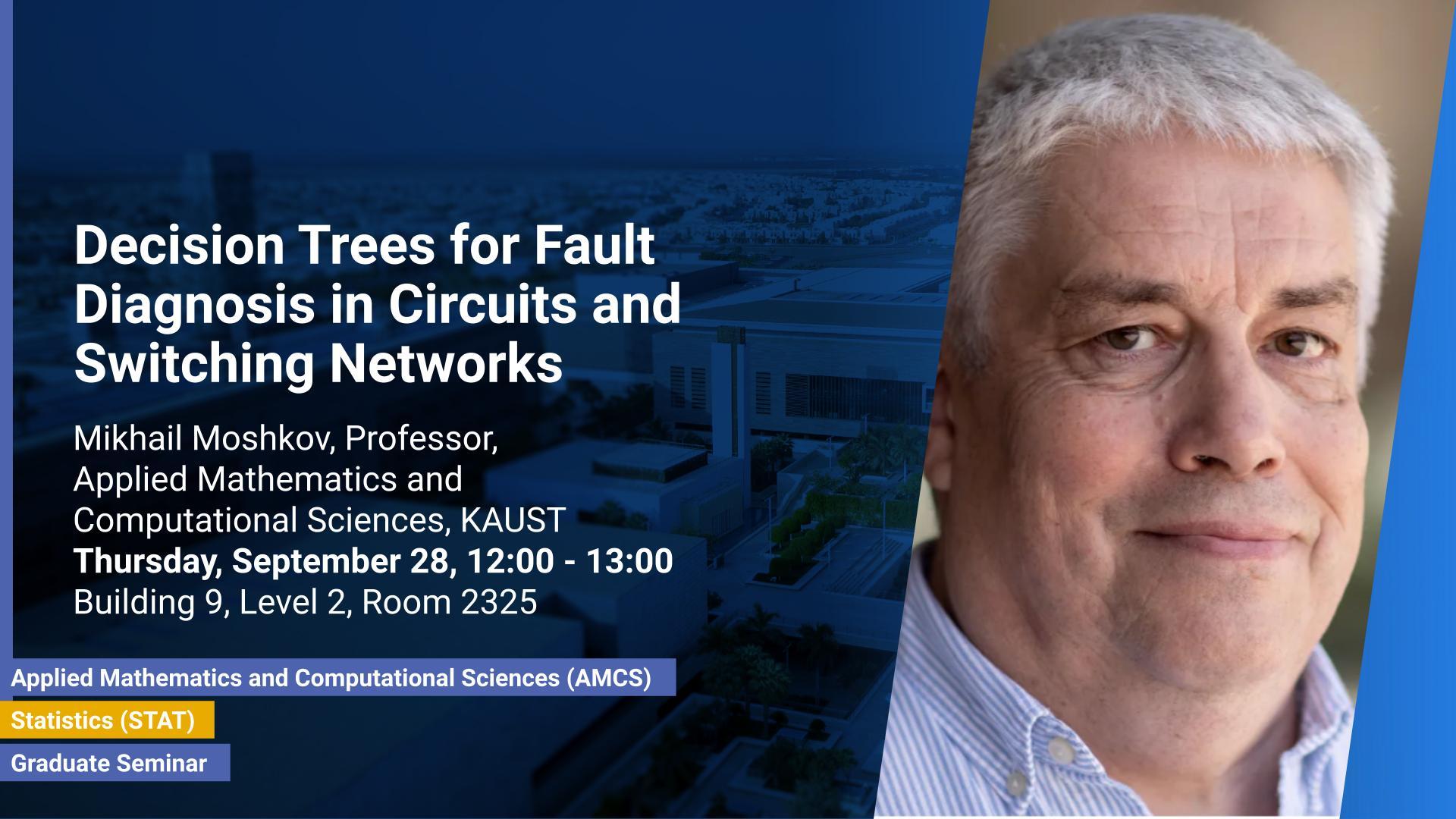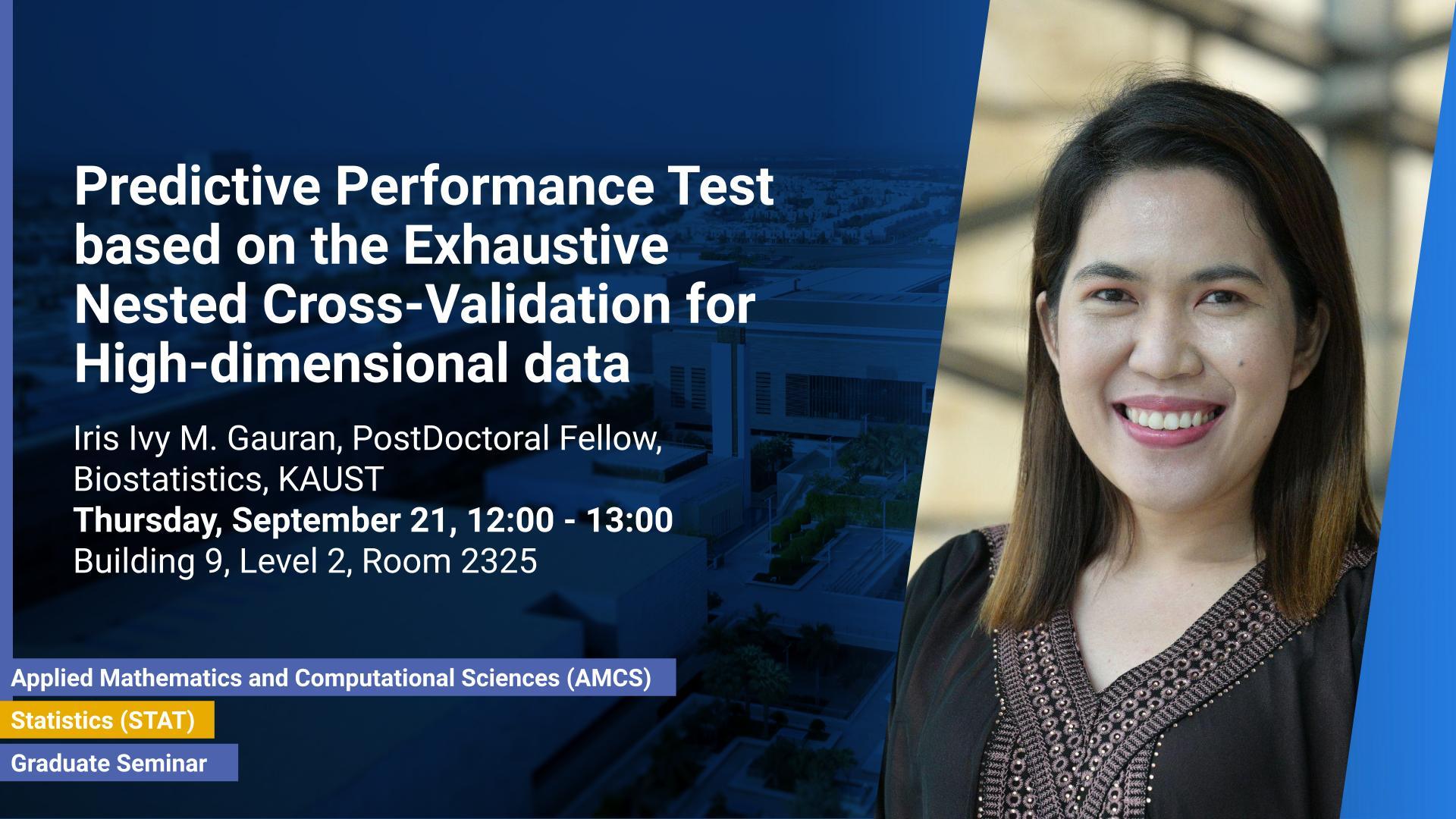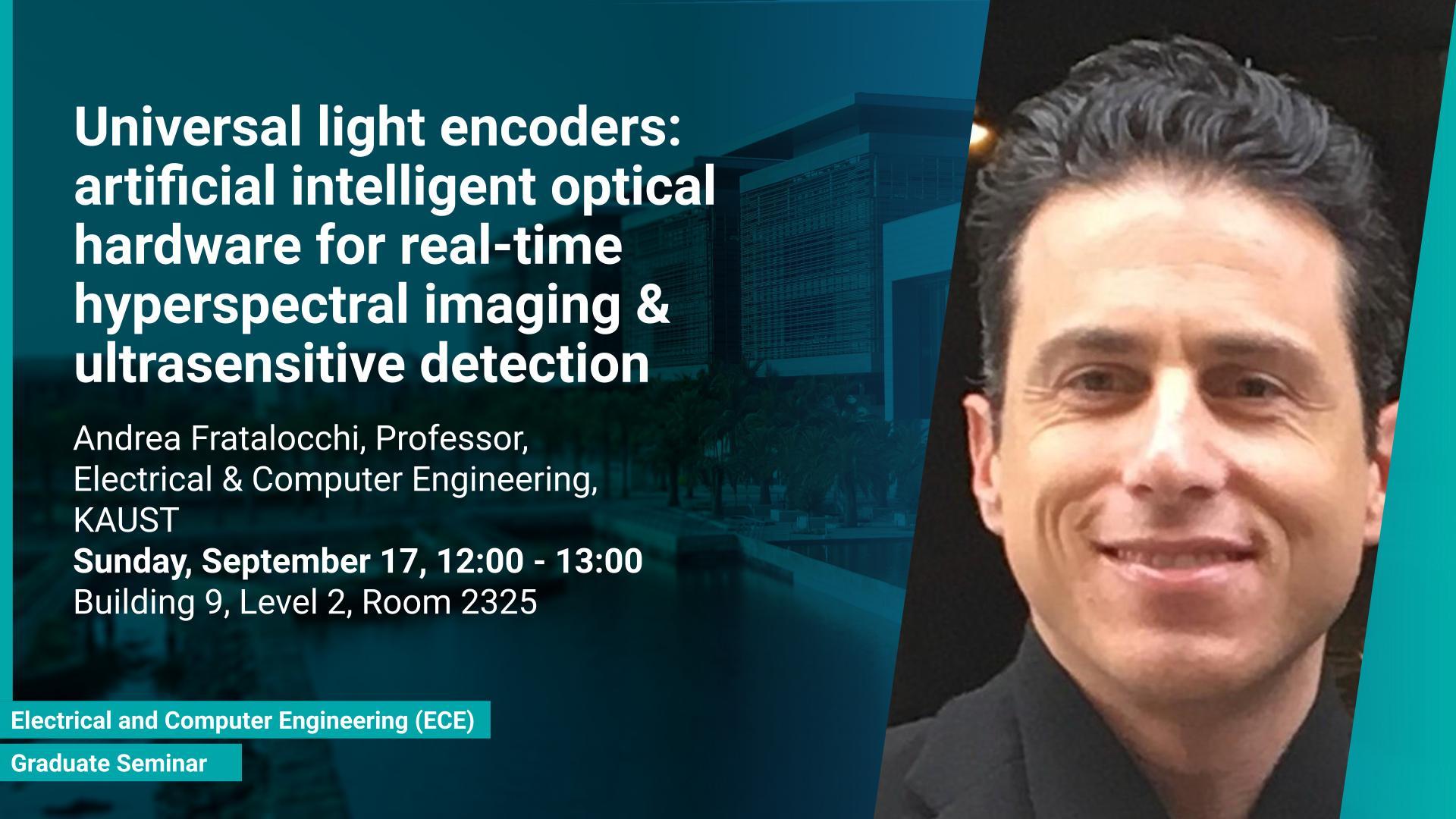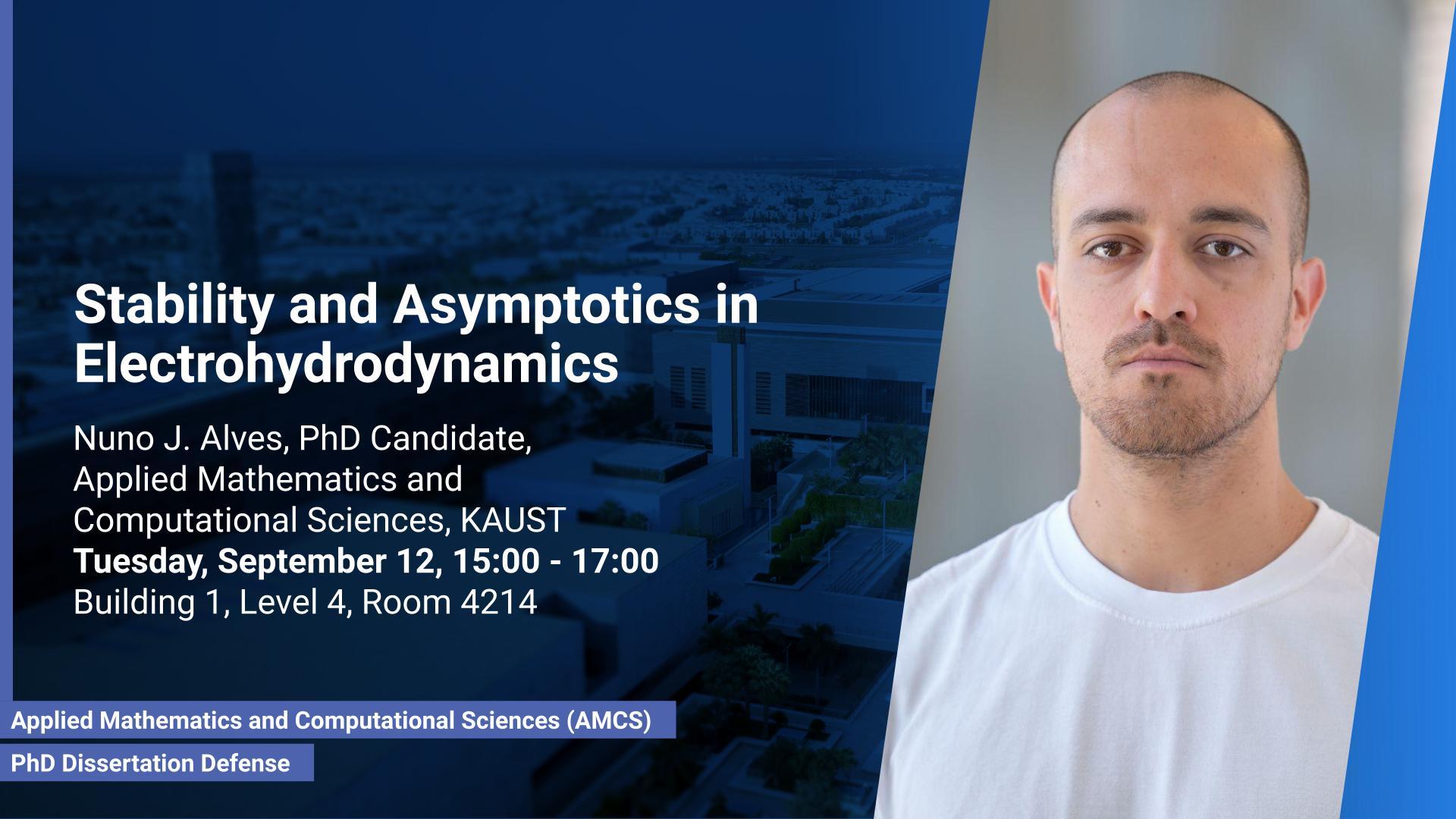Prof. Qing Nie, Department of Mathematics, Department of Developmental and Cell Biology, NSF-Simons Center for Multiscale Cell Fate Research, University of California, Irvine
Thursday, November 16, 2023, 15:30
- 17:00
Building 9, Level 4, Room 4225
Contact Person
Abstract
Cells make fate decisions in response to dynamic environments, and multicellular structur
Thursday, November 16, 2023, 12:00
- 13:00
Building 9, Level 2, Room 2325
Contact Person
We are all familiar with the tendency of water waves to break in shallow water, for instance at the beach. Indeed, breaking is a universal behavior of solutions to first-order nonlinear hyperbolic PDEs, and manifests itself in phenomena ranging from traffic jams to shock waves.
Gianmarco Manzini
Tuesday, November 14, 2023, 15:30
- 17:00
Building 9, Level 4, Room 4225
Contact Person
Tensor network techniques are known for their ability to approximate low-rank structures and beat the curse of dimensionality. They are also increasingly acknowledged as fundamental mathematical tools for efficiently solving high-dimensional Partial Differential Equations (PDEs). In this talk, we present a novel method that incorporates the Tensor Train (TT) and Quantized Tensor Train (QTT) formats for the computational resolution of time-independent Boltzmann Neutron Transport equations (BNTEs) in Cartesian coordinates.
Francesca Gardini, Associate Professor, Dipartimento di Matematica, Università di Pavia, Italy
Tuesday, November 14, 2023, 14:30
- 15:30
Building 9, Level 4, Room 4225
Contact Person
A Schrödinger equation for the system’s wavefunctions in a parallelepiped unit cell subject to Bloch-periodic boundary conditions must be solved repeatedly in quantum mechanical computations to derive the materials’ properties.
Tuesday, November 07, 2023, 10:00
- 11:00
Building 1, Level 4, Room 4214
Contact Person
Machine learning assumes a pivotal role in our data-driven world. The increasing scale of models and datasets necessitates quick and reliable algorithms for model training. This dissertation investigates adaptivity in machine learning optimizers.
Research Scientist,
Applied Mathematics and Computational Sciences
Thursday, November 02, 2023, 12:00
- 13:00
Building 9, Level 2, Room 2325
Contact Person
Free boundary problems arise naturally in a range of mathematical models that describe physical, biological or financial phenomena, such as the melting of ice into water, the dynamics of a population or the behavior of stock markets, to mention just a few.
Catalina Albornoz, Quantum Community Manager at Xanadu
Tuesday, October 31, 2023, 15:30
- 17:00
KAUST
Contact Person
Xanadu is a Canadian quantum computing company with the mission to build quantum computers that are useful and available to people everywhere. Xanadu is one of the world’s leading quantum hardware and software companies and also leads the development of PennyLane, an open-source software library for quantum computing and application development.
Tuesday, October 31, 2023, 15:30
- 17:00
Building 5, Level 5, Room 5209
Contact Person
This talk begins with the problem of pricing American basket options in a multivariate setting. In high dimensions, nonlinear PDE methods for solving the corresponding Hamilton-Jacobi-Bellman (HJB) equation become expensive due to the curse of dimensionality.
Prof. Virgilio Gómez-Rubio, Department of Mathematics, Universidad de Castilla-La Mancha, Spain
Thursday, October 26, 2023, 12:00
- 13:00
B9-L2-R2325
Abstract
The COVID-19 pandemic produced excess mortality in many countr
Haithem Taha, Associate Professor
Tuesday, October 24, 2023, 16:00
- 17:00
Building 5, Level 5, Room 5209
Contact Person
The Euler equation does not possess a unique solution for the flow over a two-dimensional object. This problem has serious repercussions in aerodynamics; it implies that the inviscid aero-hydrodynamic lift force over a two-dimensional object cannot be determined from first principles; a closure condition must be provided. The Kutta condition has been ubiquitously considered for such closure in the literature, even in cases where it is not applicable (e.g. unsteady).
Erick Chacon Montalvan, Postdoctoral fellow, Statistics Geohealth Group, KAUST
Thursday, October 19, 2023, 12:00
- 13:00
Building 9, Level 2, Room 2325
Spatial data analysis commonly needs to deal with spatial data derived from multiple sources (e.g. satellites, stations, survey samples) with different supports, but associated with the same properties of a spatial phenomenon under interest. Usually, predictors are also measured on different spatial supports than the response variable.
Dr. Jenni Strabley, Anand Shah, Dr. Brian Neyenhuis
Thursday, October 12, 2023, 16:00
- 18:00
via Teams Meeting ID: 272 951 776 79; Passcode: mAhT2y
Contact Person
Quantinuum is the world’s largest integrated quantum computing company. Quantinuum has developed the H-Series quantum computers based on a trapped-ion architecture using the unique and highly-scalable QCCD architecture (QCCD = Quantum Charge-Coupled Device), and released its first two generations: the System Model H1 and H2. The H-Series QPUs are well-known for their superior, low noise performance and differentiating capabilities such as all-to-all connectivity and mid-circuit measurement with very low qubit cross talk. Dr. Brian Neyenhuis will discuss how the QCCD architecture enables these differentiators and what researchers can do with the H-Series quantum computers that they cannot do on other commercially available quantum computers. As a full stack quantum computing company, Quantinuum also makes TKET, an open source SDK compiler and optimizer, as well as algorithm and application layers for applications in Machine Learning, Finance, Chemistry, and modeling of Quantum Systems. Anand Shah will review the application and algorithm activities at Quantinuum.
Postdoctoral Fellow,
Applied Mathematics and Computational Sciences
Thursday, October 12, 2023, 12:00
- 13:00
Building 9, Level 2, Room 2325
Contact Person
In this talk we propose and validate a Space Multiscale model for the description of particle diffusion in the presence of trapping boundaries. We start from a drift diffusion equation in which the drift term describes the effect of bubble traps, and it is simulated by the Lennard–Jones potential.
Thursday, October 05, 2023, 12:00
- 13:00
B9-L2-R2325
Contact Person
Abstract
The goal of the least squares method is to find the best linea
Dr. Jakub Skrzeczkowski,Mathematical Institute, University of Oxford
Wednesday, October 04, 2023, 16:00
- 17:00
Building 1,Level 4, Room 4214
Contact Person
The degenerate Cahn-Hilliard equation, initially introduced in material science, is nowadays used in several different fields, including biology (tumor growth, cell-cell adhesion) and fluid dynamics (high-friction limit in the Euler-Korteweg equation).
Thursday, September 28, 2023, 12:00
- 13:00
Building 9, Level 2, Room 2325
Contact Person
We study theoretical problems of fault diagnosis in circuits and switching networks, which are among the most fundamental models for computing Boolean functions.
Thursday, September 21, 2023, 12:00
- 13:00
Building 9, Level 2, Room 2325
Cross-validation is an algorithmic technique extensively used for estimating the prediction error, tuning the regularization parameter, and choosing between competing predictive rules.
Dr. Yannis Yatracos
Wednesday, September 20, 2023, 15:00
- 16:00
Building 1, Level 2, Room 2202
Breiman (2001) urged statisticians to provide tools when the data, X=s(θ,Y); sampler s is available as Black-Box, parameter θεΘ, Y is random, either observed or latent. The paper’s discussants, D. R. Cox and B. Efron, looked at the problem as X-prediction, surprisingly neglecting the statistical inference for θ, and disagreed with the main thrust of the paper.
Research Scientist,
Applied Mathematics and Computational Sciences
Tuesday, September 19, 2023, 16:00
- 17:00
Building 5, Level 5, Room 5209
Contact Person
This talk is devoted to additive Schwarz methods for convex optimization. First, we propose an abstract framework for additive Schwarz methods for convex optimization. The framework's flexibility allows it to handle composite optimization problems and inexact local solvers. Moreover, it establishes a sharp convergence theory that agrees with the classical theory when addressing linear problems.
Sunday, September 17, 2023, 12:00
- 13:00
Building 9, Level 2, Room 2325
In this talk, I will review the fundamentals and application of this technology in various areas, ranging from the inverse design of ultra-flat optical components to HyplexTM, an innovative camera for acquiring and processing high-resolution hyperspectral videos in real-time at 30 frames per second.
Thursday, September 14, 2023, 12:00
- 13:00
Building 9, Level 2, Room 2325
Goodness-of-fit tests determine how well a set of observed data fits a particular probability distribution. They can also show if some categorical variable follows a hypothesized family of distributions.
PhD Candidate,
Applied Mathematics and Computational Sciences
Tuesday, September 12, 2023, 15:00
- 17:00
Building 1, Level 4, Room 4214
Contact Person
This dissertation focuses on the relative energy analysis of two-species fluids composed of charged particles. In particular, it explores several applications of the relative energy method to Euler-Poisson systems, enabling a comprehensive stability analysis of these systems.
Thursday, September 07, 2023, 12:00
- 13:00
Building 9, Level 2, Room 2325
Contact Person
I will review some works on the high-friction limit (or small mass approximation) from Euler flows to advection-diffusion systems that are gradient flows, and related asymptotic problems in fluid mechanics. The formulation exploits the variational structure of compressible Euler flows and is connected to the interpretation of nonlinear Fokker-Planck systems as gradient flows in Wasserstein distance.
Wednesday, September 06, 2023, 14:00
- 16:00
Building 1, Level 4, Room 4214
Contact Person
This thesis studies mean-field games (MFGs) models of price formation. The thesis focuses explicitly on a MFGs price formation model proposed by Gomes and Saúde. The thesis is divided into two parts. The first part examines the deterministic supply case, while the second part extends the model to incorporate a stochastic supply function. We explore different approaches, such as Aubry-Mather theory, to study the properties of the MFGs price formation model and alternative formulations using a convex variational problem with constraints. We propose machine-learning-based numerical methods to approximate the solution of the MFGs price formation model in the deterministic and stochastic setting.
Tuesday, September 05, 2023, 16:00
- 17:00
Building 5, Level 5, Room 5209
Contact Person
In this talk, I will describe a surprising application for a known online learning problem and its optimal algorithm.
